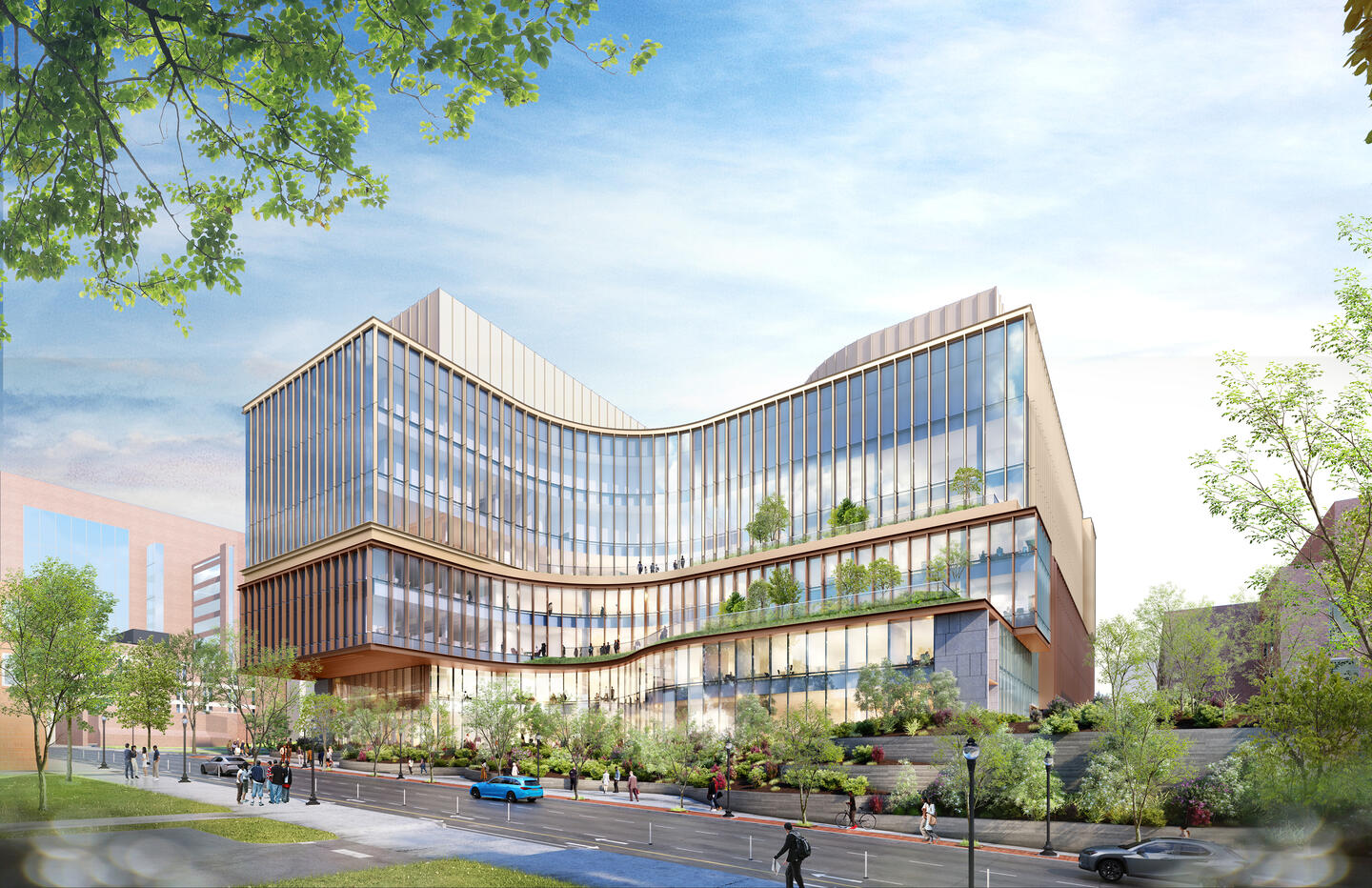- Name
- Vanessa Wasta
- wasta@jhmi.edu
- Office phone
- 410-955-8236
The latest designs of a new Life Sciences Building on the Johns Hopkins East Baltimore medical campus were presented today to the Baltimore City Urban Design & Architecture Advisory Panel.
Scores of scientists from across Johns Hopkins divisions have been working with Johns Hopkins architecture and planning staff and award-winning, Boston-based architects Payette to design a collaborative, technology-driven hub for fundamental, basic biomedical science, bringing together expertise from the School of Medicine, as well as from the Bloomberg School of Public Health, the Krieger School of Arts and Sciences, the School of Nursing, and the Whiting School of Engineering.
From creating DNA cutting tools and analyzing how molecules interact to drive biology to the development of gene therapies and treatments for human disease, basic research is at the root of all advances in modern medicine.
On the corner of Monument Street and Broadway, the new building will remain within the current Johns Hopkins campus footprint, occupying the former site of Hampton House, Reed Hall, and the Denton A. Cooley Center and replacing aging structures on the East Baltimore campus that have been dedicated to biomedical research.
The Life Sciences Building will create a new ecosystem for foundational, basic biomedical research centered around rapidly developing technologies in areas such as imaging, artificial intelligence, and genetics, which are helping scientists make discoveries at a record-breaking pace.
With approximately 500,000 gross square feet and six floors of lab and convening space, the building will be the hub for six newly developed "scientific neighborhoods" that connect scientists in similar fields and five "technology hubs" that help scientists maximize the potential of new scientific technologies to advance biomedical research. The neighborhoods and hubs, designed and led by Johns Hopkins scientists, will take shape alongside construction of the building.
"We are thrilled to advance our scientists' vision of creating research infrastructure designed to speed the pace of discovery and foster interdivisional collaboration across the university," says Theodore DeWeese, dean of the medical faculty and CEO of Johns Hopkins Medicine. "This state-of-the-art facility will help ensure that Johns Hopkins University continues to set the standard of excellence in medical research."

Image caption: In this rendering, the new building is seen looking southeast from Monument Street.
Image credit: Rendering courtesy Payette
Architects and scientists have worked together over the past year to design a flexible mix of laboratory space, with about 60% of lab space dedicated to experimental approaches and 40% of space for scientists focused on computation. There will be more the 1,200 lab benches for 920 scientists working in biomedical research.
The building will offer indoor and outdoor collaboration spaces for scientists, natural light throughout much of the building, a café, and meeting space.
In addition to a hub for faculty-led research, the Life Sciences Building will be home to hundreds of graduate students pursuing exciting biomedical research.
Recent basic science discoveries at Johns Hopkins include: an analysis of heart tissue sent to space, a search for new biological targets for treating breast cancer, surprise findings from bacteria in freshwater lakes and soil that hint at better antibiotics, a discovery of a molecular pathway disrupted by UV radiation, and using super-chilled brain cells to determine how an epilepsy drug works.
Groundbreaking on the Life Sciences Building is anticipated for the summer of 2025, with construction lasting through 2029.
Posted in University News
Tagged university construction








